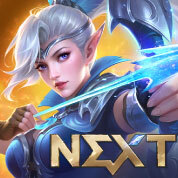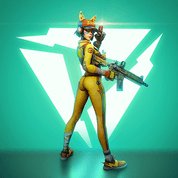
Movement in Tactical First-Person Shooters (Tac-FPS) is essential to learn because it is the first thing that players should get to know. Yes, shooting is part of Tac-FPS, but movement is as essential as gathering information. Movement alone can take up about 33% of information gathering – the others being sound cues and ability usage. Players with exceptional movement can constantly gather information for the team while manipulating the same for the enemy team.
In this article, we will cover three things about movement: actual movement fundamentals, shooting foundations, and – as a bonus – a positioning guide. But first, we will establish a very important mechanic to note.
Peeker’s Advantage – A Persistent Problem in Tac-FPS?
In online-focused Tac-FPS games like VALORANT, there is this problem with peekers having a slight advantage over the one holding an angle. The idea of this advantage aptly called peeker’s advantage, is that the one who pushes the angle will be rewarded with a slight advantage due to four things explained in this article: client framerate, 1-way network lag, server framerate, and network buffering. For more information on these, please click the link and this in-depth article from the developers themselves. Now, why is this a persistent problem in online matches? I could argue that this is a problem because holding an angle has been one of the most used tactical strategies in Tac-FPS shooters since the dawn of time. But, say, for example, someone with about 100ms ping peeks against someone with about < 20ms ping and holding an angle. The one with the highest ping will have the most advantage over the one with the lower ping because of how the network registers the moves (from peeking the angle to the holder seeing the peeker). But I digress. What I can say, though, is that peeker’s advantage will be there unless network infrastructures improve. The mere difference in ping, even in such a minuscule amount as milliseconds, directly affects gameplay for all players. However, we can always adjust our gameplay even with peeker’s advantage.
Movement Fundamentals
These are some of the most used movements in Tac-FPS games like VALORANT. I will list down about seven things about movement fundamentals. May these guide you to have better movement.
- Strafing & Counter-strafing – Tac-FPS games utilize the WASD layout. Pressing W moves the character forward and S backward. A and D move the character left (A) and right (D). In the olden days, the default setting of A and D would be to look left and right. This old layout seemed counter-intuitive as shooters became more advanced and relied more on the mouse for looking and shooting. Imagine playing VALORANT all using the keyboard. Strafing became a standard movement for shooters and, of course, Tac-FPS games. The more advanced form of strafing, counter-strafing, involves firing a shot and then strafing either to the left or right and then firing again. This mechanic takes advantage of the weapon’s first-shot accuracy before the firing and movement errors kick in.
- Jiggle peek – Jiggle peeking involves strafing with the intent to gather information. This is particularly useful for long sightlines like Haven’s A and C Long sections. Jiggle peeks are often used to bait out the sniper player on the opposite team. To know if you have succeeded in getting information, you must turn on the Minimap Vision Cones in the Options menu. Enemies will be marked with a red “?” on the minimap when they are in your line of sight. Pre-firing angles can also be used here, which is the main difference between jiggle peeking from…
- Jump peek – A rather advanced peeking that is essentially a jump version of jiggle peek. This also baits out the opposing team’s sniper by changing their crosshair placement from horizontal to vertical. Since jump peeking has more recovery time than jiggle peeking, the two can be mixed up to confuse the potential holder rather than doing two consecutive jump peeks. To do a jump peek, aim your crosshair to the direction you want to jump – right, for example. Then, hold W and D then, jump to the direction then, flick your crosshair in the opposite direction and then press W and A to go back to the angle you are hiding in. Another trick here is to do a 180-degree turn using the mouse without pressing A or D. [If this seems complicated, the incorporated GIF will guide you properly.]
- Slicing the pie – A movement fundamental that is directly lifted from actual military practice. Slicing the pie involves peeking and clearing all possible angles by incorporating jiggle peeking and crosshair placement. It is tricky to anticipate if someone is on a higher elevation in angles with an elevation change. To clear this, slicing the pie will likely work as this gives the peeker another look at the angle while securing the one they already cleared.
- “Ferrari” peek – Another advanced peeking technique where wide swinging (the origin of “Ferrari” peek) overlaps with the run-and-gun mechanic. VALORANT has a unique version of the “Ferrari” peek: the Poppin Swing. Regardless of what it is called, the main idea of “Ferrari” peek takes peeker’s advantage and knowing when to shoot as its foundation. Please take note of the latter: knowing when to shoot means having the confidence to take the shot after a swing. What is the advantage of a “Ferrari” peek? It messes up the timing of the one holding an angle, especially in tight corners or when they are confirmed to be sitting ducks. [Notable player who uses “Ferrari” peek: Poppin]
- Crouch peeking – Crouching while peeking takes advantage of messing up the crosshair placement of the one holding an angle by changing the height of the peeker. For high-skill players (Ascendant – above), their crosshair is usually aimed at head height. By crouch peeking, the peeker will have a higher chance of winning the duel because of the change in height. This can be mixed up with a normal jiggle peek or a “Ferrari” peek. [Notable player who utilizes crouch peeking: Dasnerth]
- Movement error – This mechanic determines the gap between the start or finish of the movement and the first shot to be fired. Knowing this gap will help in peeking. To train yourself, set your default crosshair to show movement error.
Shooting Fundamentals
While movement is ⅓ of information gathering in VALORANT, shooting is ⅓ of the whole gameplay of VALORANT. Learning these fundamental shooting techniques will help you get better.
- Pre-firing – Pre-firing is a technique that pre-fires an angle or a wall bang spot an enemy might be, or commonly, holding. This is usually paired with jiggle peeking in long sight lines.
- Wall bang – VALORANT is notorious for walls that are “paper-thin,” meaning a lot of the walls and map resources (boxes, for example) can be shot through and get some kills. On average, walls can be shot through with high-powered guns (Ghost, Sheriff, Vandal, Phantom, Marshal, Operator, Ares, Guardian, Odin). The most common is the Odin wall bang spot on Ascent B Site to catch enemies in B Main. A Sova dart or Cypher cam can help gather information to execute the wall bang. There is also a wall bang spot on Split’s B Back where there is a wooden bulletin board on the left side where enemies might hold.
- Crosshair placement – A big fraction of shooting in Tac-FPS games is crosshair placement, where a properly-placed crosshair could net some instant kills. For VALORANT, ideally, the crosshair should be placed at head level. To practice this, you can go to The Range and find out where the head level is for the bots. Also, there are some elevations and distances that you can try.
- Aim down sights (ADS) – The right mouse button is usually used for ADS. In the early days of Tac-FPS, this button usually did not ADS. Instead, it introduced alternative fire (like from semi-automatic to burst) or included attachments like a suppressor. In VALORANT, Some of these properties are either eliminated (since suppressors are attached to the Phantom, Ghost, and Spectre) or incorporated (burst-fire for Bulldog) when you ADS. Of course, there are pros and cons to using ADS. The pros are it stabilizes your aim compared to hip-fire, which translates to more first-shot accuracy, and it also makes weapons effective at longer ranges, except for the Spectre. Meanwhile, ADS reduces movement speed and has a lower fire rate. These do not apply to sniper rifles.
- Spraying and bursting – One of the most popular shooting techniques in VALORANT in all skill levels since it can be incorporated into the others I mentioned above. Spraying a wall bang spot, spraying the angle by pre-firing, spraying with ADS on. Spraying involves shooting five or more bullets in one press of the left mouse button. On the other hand, bursting uses more conservative and literal bursts when shooting – three bullets or less.
- Firing error – The time the gun recoils between the first and second shots. Coupled with movement error, it greatly decreases your aim. To practice the timing, set your default crosshair to enable firing error. It is below the setting for movement error.
Positioning Basics
Positioning in Tac-FPS means everything. A perfectly-placed Agent in VALORANT could net both information and a kill. These are some basic positions you may want to incorporate into your game.
- Off-angle – Holding an off-angle, like off a corner, somewhat eases the peeker’s advantage by letting the holder see the peeker a little faster (again, we’re talking a millisecond difference). This also messes with the peeker’s expectation because they will pre-fire the common angle expecting an easy kill. However, you’re positioned at an off-angle, so the peeker must adjust their crosshair placement.
- Tucking in corners – Of course, always playing off-angle will make the opponent expect you to be there since it worked. Why not mix it up with the good old tuck in the corner? Holding corners, especially on 2-versus-1 situations, can gather info for your teammate at the very least. For the first 30 seconds of the round, that could mean a call to rotate to the other site or informing teammates where enemies are going. This leads us to…
- Staying in place to gather information – I cannot stress this enough. It is important to gather information in Tac-FPS games, and VALORANT is not exempted from this. Staying in one place or its vicinity can lead to improvised strategic calls (rotate, flank, clearing site). Of course, do not do this all the time, as opponents will anticipate that there is one who is lurking.
- Flanking – A common strategy is to take the opponents from where they least expect you to be. Flanking, as a strategy, involves rotating in places where the opponents might not expect you to come. A common place to flank: opponent’s spawn. In actual practice, and should be incorporated in VALORANT, flanking is taking the opposing team from the sides and effectively surrounding them. This requires a lot of team coordination to pull off by positioning each player to where they are most optimal.
- Lineups – A unique positioning for VALORANT. Positioning for lineups requires extensive map knowledge and timing. This is for more advanced players who take risks in post-plant situations. To practice lineup positions, play a Custom Game on any map using Agents that have utilities that damage opponents – Sova, Brimstone, Viper, Killjoy, KAY/O – and take a spot in the map where two conditions must be met: a) that the lineup player hears the Spike being defused and b) they are in an unpredictable location. A safe location can be as far as 60 meters from the Spike. Any distance beyond it is deemed impractical, but I’ve seen site-to-site (75 meters – above) lineups, and they pulled it off. In any case, the safer the distance is, the more effective the lineup will be.
As with all basic guides, the ones listed here are the most common ones seen and used in an average VALORANT match in all skill levels. Finding more advanced techniques than those I’ve included here will be on your discovery. This makes playing the game fun and exciting. But I hope you get some valuable information here to get you started on your journey to becoming Radiant. Good luck out there.
Don’t forget to top up your VALORANT Points at Codashop. We have a fast and convenient way for purchasing VALORANT Points. Just provide your Riot ID, the amount of VALORANT Points you want to purchase, and the method of payment you prefer. It’s simple, fast, and effortless.


























